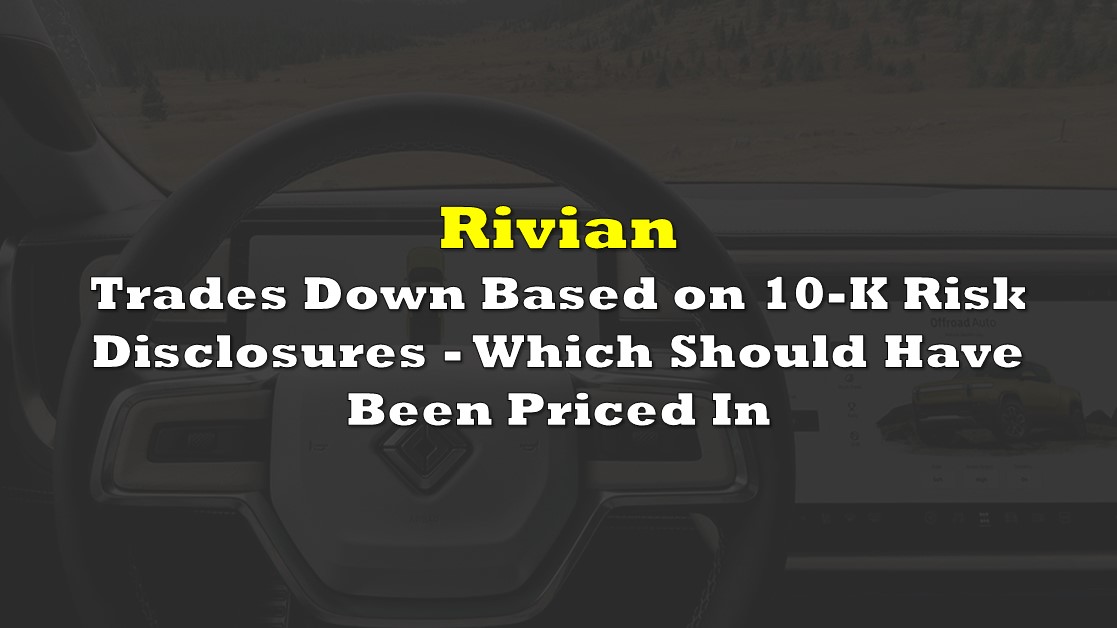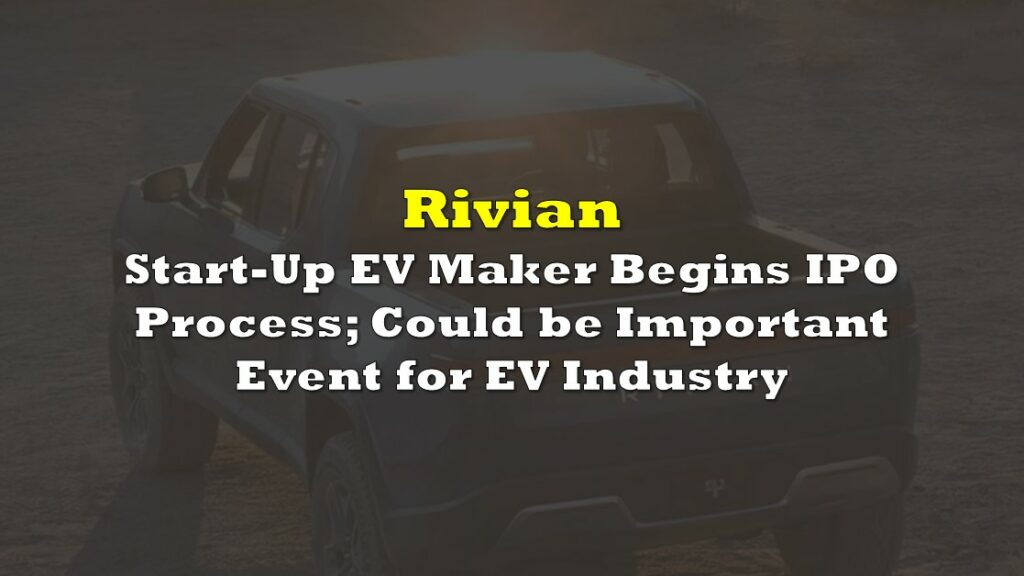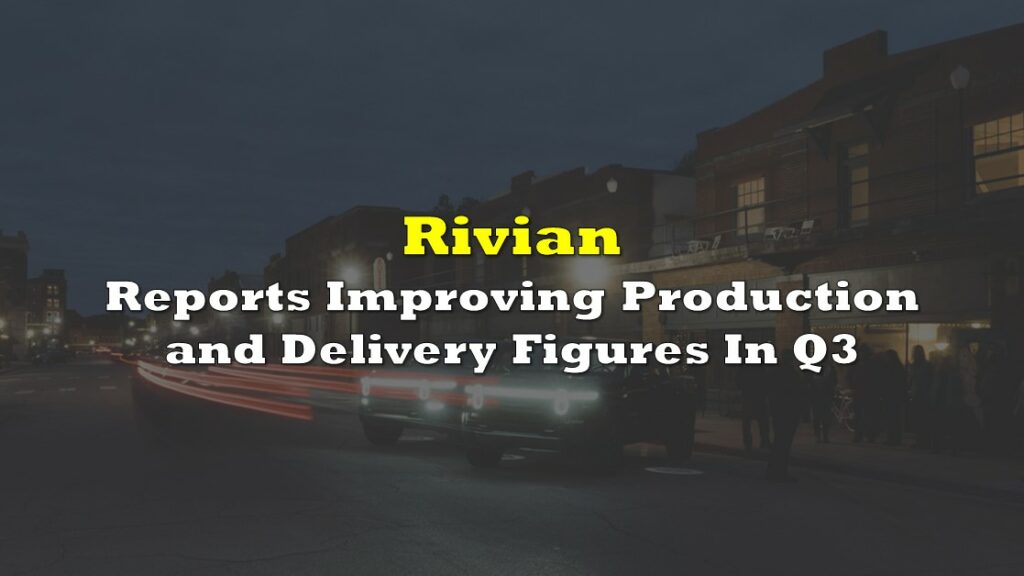Over the last few trading days, Rivian Automotive, Inc. (NASDAQ: RIVN) shares have shed about 14% of their value. The principal reason for the downturn seems to be some cautionary language the company included in its 2021 10-K annual report which was filed with the SEC on March 31, 2022.
Investors seem to be confusing passages in the 10-K which sound more like a recitation of already discussed, fairly well known risks for new disclosures. Phrased differently, much of the caution expressed in the “Risk Factors” section of Rivian’s 10-K reads like “boilerplate” risk language.
For example, the company says that the conflict in Ukraine has “caused disruptions to and delays in our operations, including shortages and delays in the supply of certain parts, including semiconductors.” Also, there have been “very sizable increases in recent months in the cost of key metals, including lithium, nickel, aluminum, and cobalt with volatility in pricing expected to persist for the foreseeable future.”
These factors were the principal reasons behind Rivian’s March 10 issuance of weak full-year 2022 vehicle production guidance, as well as a massive projected 2022 cash burn rate. In more detail, Rivian management now expects to produce 25,000 aggregate R1T pickup trucks, R1S SUVs, and electric delivery vans in 2022.
Absent supply chain issues, Rivian believes it could have manufactured 50,000 vehicles this year. That hypothetical pace seems plausible as (refundable) reservations for the R1T and R1S models combined reached 83,000 as of March 8, 2022, versus around 71,000 on December 15, 2021, and 48,000 on September 30, 2021.
Based on the 25,000 vehicle production pace, Rivian expects its adjusted EBITDA will be negative US$4.75 billion in 2022.
| (in millions of U.S. dollars) | Full Year 2022E | 1Q 2022 (est) | 4Q 2021 | 3Q 2021 |
| Revenue | $54 | $1 | ||
| Operating Income | ($2,454) | ($776) | ||
| Operating Cash Flow | ($1,086) | ($685) | ||
| Adjusted EBITDA | ($4,750) | ($1,108) | ($727) | |
| Capital Expenditures | ($2,600) | ($455) | ($469) | |
| Cash | $18,133 | $5,156 | ||
| Pro Forma Cash Reflecting IPO and Debt Issuance Proceeds | $19,920 | |||
| Debt and Convertible Preferred | $1,533 | $11,085 | ||
| Number of Vehicles Produced | 25,000 | 1,410 | 1,003 | 12 |
| Number of Vehicles Delivered | 909 | 11 |
Valuing Rivian based on this enormous prospective EBITDA loss is quite difficult, but when the focus shifts to revenue, the company’s valuation is robust but not outrageous, particularly given how other electric vehicle manufacturers like Lucid Group, Inc. (NASDAQ: LCID) are trading in the market. Specifically, if the 25,000 vehicles which Rivian plans to sell in 2022 were to carry an average sales price of US$90,000, its revenue could be about US$2.25 billion. Set against its enterprise value (EV) of about US$24.5 billion, Rivian trades at a fairly reasonable EV-to-2022E revenue ratio of about 11x.
Rivian clearly does not trade at a discounted valuation, but with its recent downturn, the stock trades at a revenue multiple consistent with other high growth companies. Rivian shares have declined about 75% from the frothy US$180 level at which it briefly traded in the mid-November 2021 aftermath of its successful IPO.
Rivian Automotive, Inc. last traded at US$46.44 on the NASDAQ.
Information for this briefing was found via Edgar and the companies mentioned. The author has no securities or affiliations related to this organization. Views expressed within are solely that of the author. Not a recommendation to buy or sell. Always do additional research and consult a professional before purchasing a security. The author holds no licenses.









